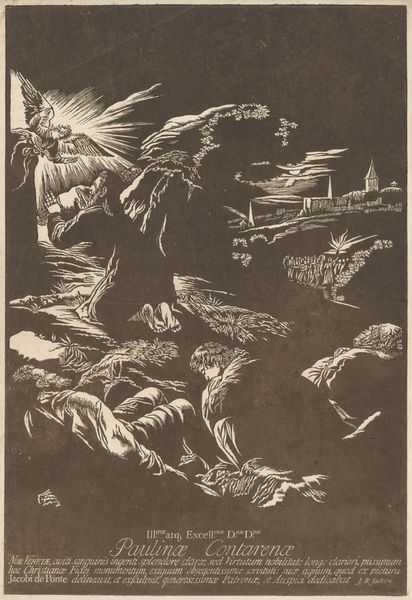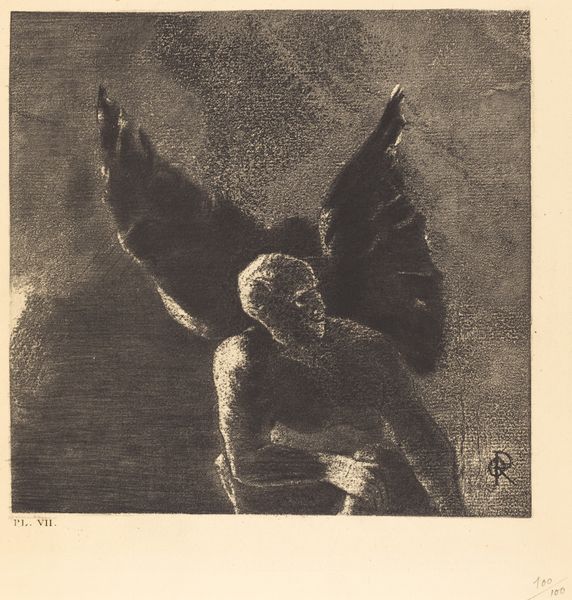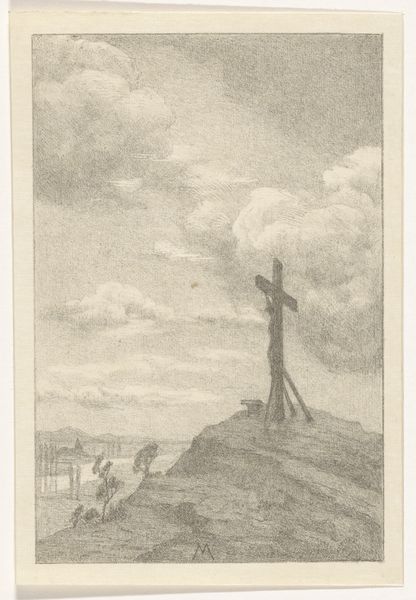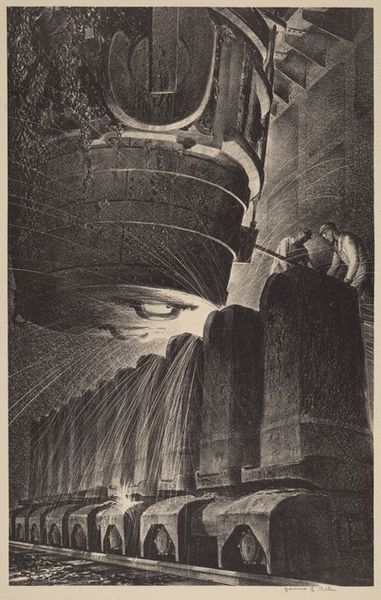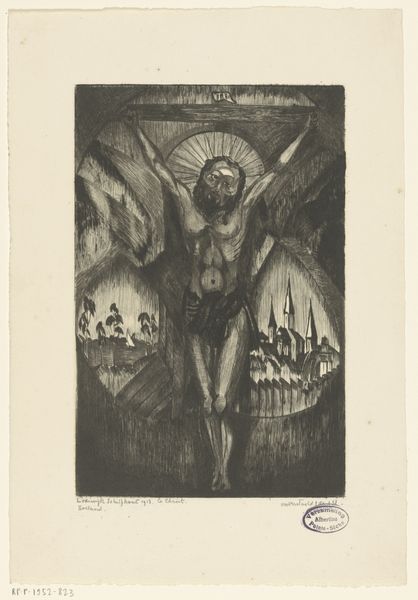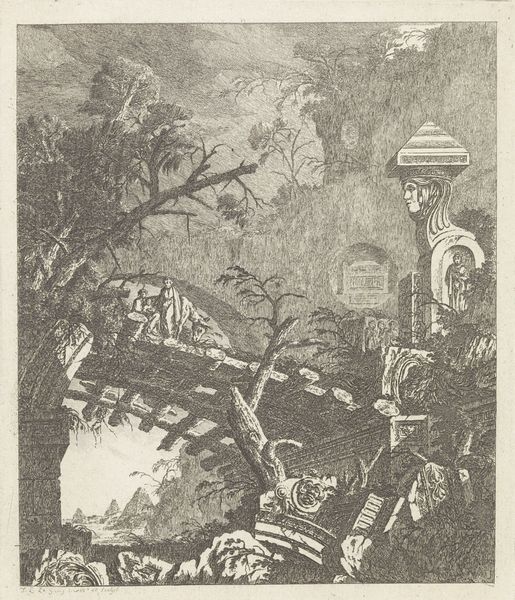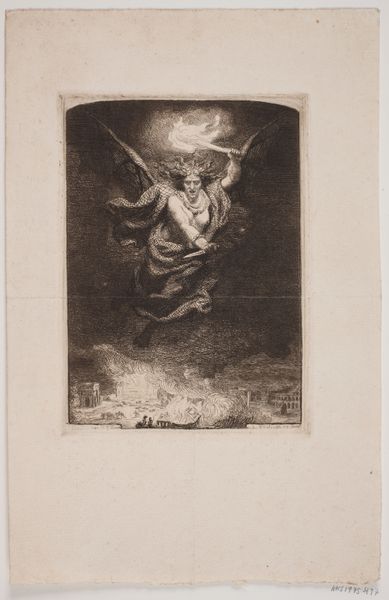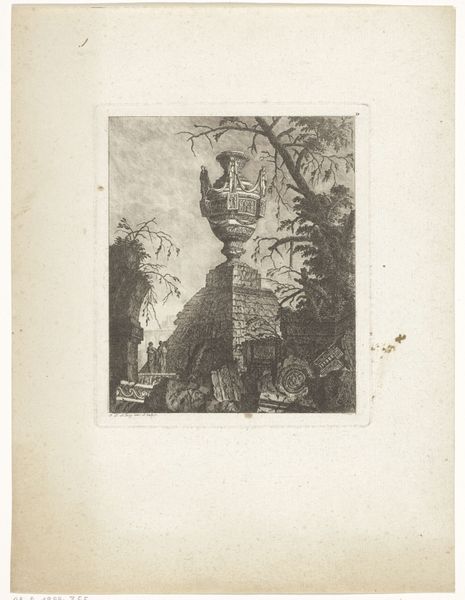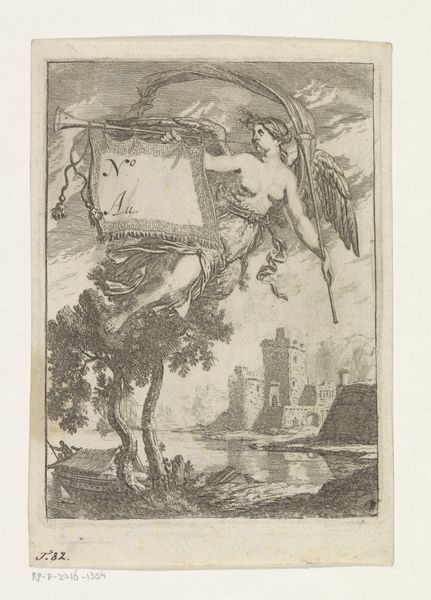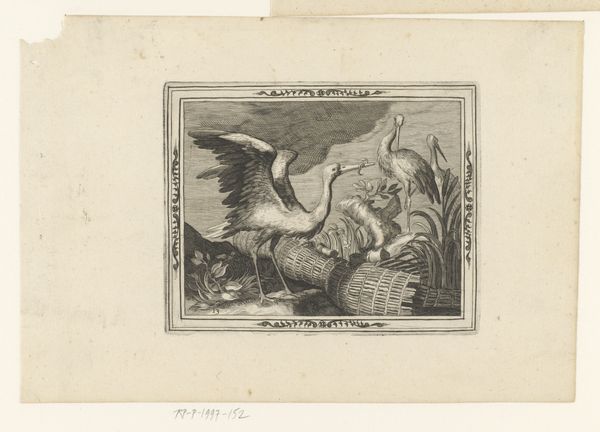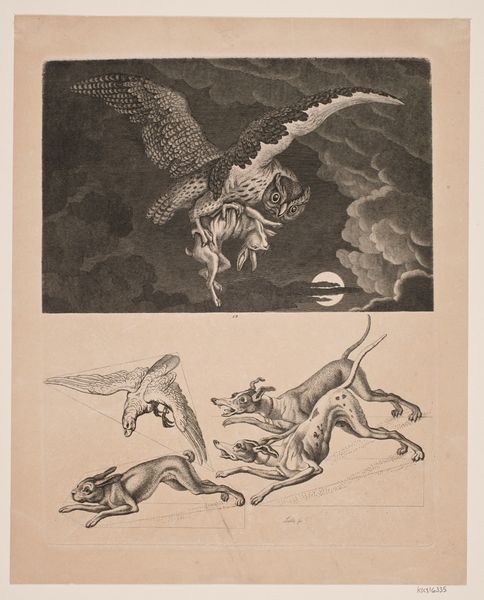
drawing, print, paper, ink
#
drawing
#
narrative-art
# print
#
landscape
#
figuration
#
paper
#
ink
#
symbolism
#
cityscape
#
watercolor
Dimensions: 212 mm (height) x 150 mm (width) (billedmaal)
Editor: This is Waldemar Böhme's "Ali Babas syn," created between 1893 and 1899, using ink on paper. It has a haunting quality; what really stands out to me is the contrast between the winged figure and the industrial cityscape below. What's your take on it? Curator: From a materialist perspective, I'm immediately drawn to the process and labor embedded in this print. Look at the repetitive, almost mechanical hatching used to create tone. It speaks volumes about the artist's process and, by extension, the means of production at the turn of the century. Do you notice how the fantastical winged figure almost seems to be observing the cityscape? Editor: Yes, it's as if it's both part of and separate from the industrial world beneath it. Curator: Precisely! It makes you wonder about the social context – the relationship between labor, industrialization, and the dreamlike escapes found in symbolist art. This print challenges that neat division of 'high art' and the materials of daily life by employing such labor-intensive techniques. Where did Böhme get his paper, and how was the ink manufactured? Were those who toiled producing paper and ink even able to purchase the print made with their own wares? Editor: I never considered the labor involved in creating the materials themselves! It really grounds the piece in a specific time and place. The division between fantasy and reality blurs further. Curator: It’s important to remember that even ethereal visions like this are made tangible through material realities and exploited labour. I encourage you to consider the labour process involved in similar artworks. What does it tell you? Editor: I’ll definitely look at art differently now, keeping in mind the social conditions and production methods that influenced its creation. It's not just about the finished image. Curator: Exactly! It’s about unearthing the embedded processes of art and understanding consumption through its raw components.
Comments
No comments
Be the first to comment and join the conversation on the ultimate creative platform.
